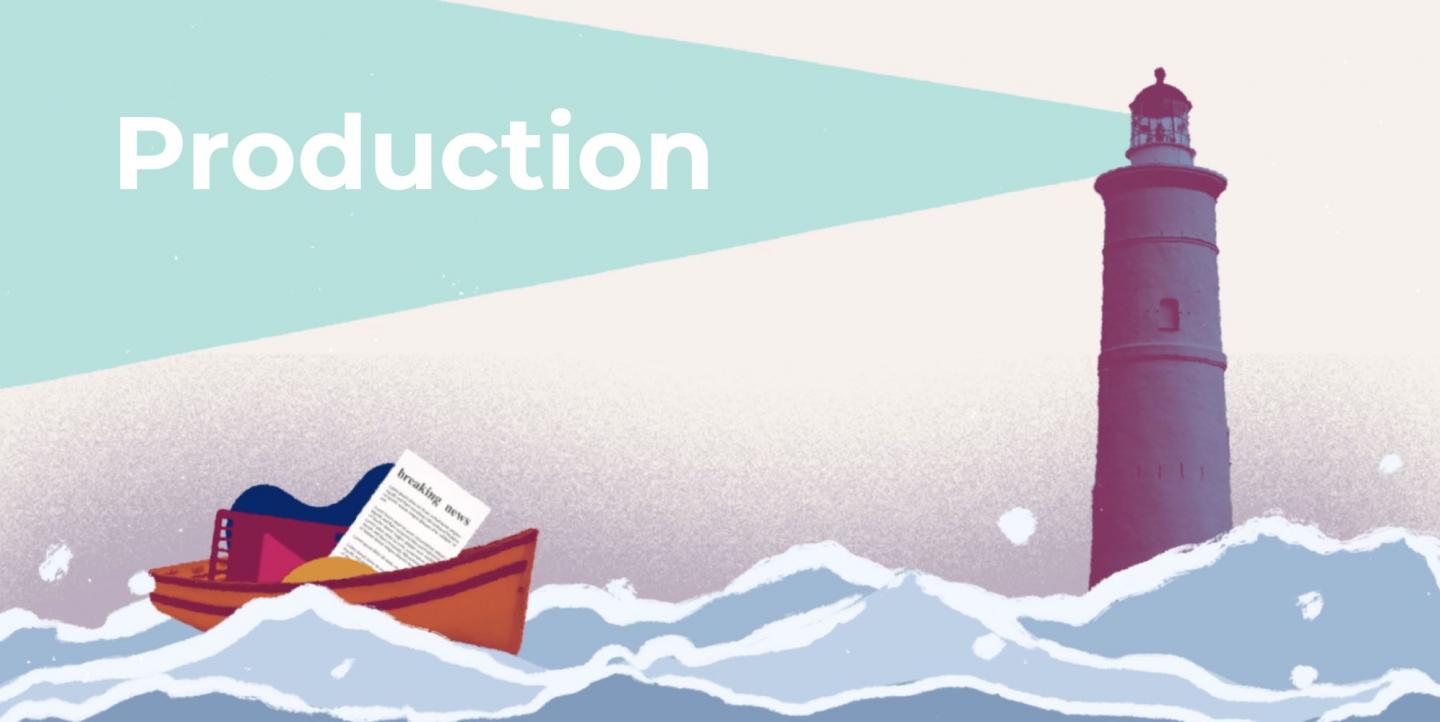Every time you run a story, you and your editors need to make a number of editorial decisions. These should initially be made by you, as the story owner, and then referred up to your editors, collaborating organization and, if applicable, to the high risk team.
Some decisions may not be simple or straightforward. Check the list below to guide your decision-making.
The idea: What will your story be about? The University of Sussex outlines 12 steps for writing news stories, focusing on the who, what and how of your story.
The pitch: You should be able to write an effective one line pitch to sell your story to editors, publishers and news platforms. Here is a guide from Al Jazeera on refugee reporting, including a full section on crafting a pitch. Here is another resource from JournoResources to help with this step of the process.
The storyline: Your story should have a consistent storyline that can guide your reporting. Here is an IJNet resource on how to write a solid, consistent broadcast news story. Here is a BBC guide for writing news reports.
[Read more: Reporting on refugee communities: Safety and risk assessments]
Editorial purpose: What story are you telling, why are you telling it, and why now? Here is a report from press freedom organization Article 19 that examines how the media has reported on refugees, and why it is critical that you define your purpose when reporting on the issue.
Editorial perspective: Consider the scope of your idea and tighten the angle you take, ensuring that it is clear and focused.
Ethical code: Define your ethical boundaries when reporting on refugees during the pandemic. You will be handling vulnerable resources and likely sensitive visual material. Your ethical code will guide your editorial judgment accordingly.
- Many of your human sources may be fragile emotionally and mentally. Some may be minors for whom you need written permission from their guardians to interview.
- Some refugees may share graphic details about their experiences. Others may have visually graphic components to their stories, such as injuries they’ve sustained. Consider how you will ethically and responsibly document these details in your reporting.
- You should be clear about the legal rights of your interview subjects, and the legal do’s and don’ts that you must abide by as a journalist. Please refer to the ethical code section in the crowdsourcing resource in this toolkit.
- For more information, refer to the UNHCR guide for journalists reporting on refugee stories.
[Read more: Reporting on refugee communities: Crowdsourcing and fact-checking]
Reporting plan and timeline: Write a draft of your story, and outline how you will carry out your reporting. This initial document should guide you through your practical steps. Write down the technical steps and the story timeline you propose. This will result in a “treatment,” which should help you maintain clarity and consistency as you develop your story, and will help you choose the right format for your story.
- For resources on planning out your multimedia reporting, you can read Huw Edwards, BBC News reader’s key points of TV story script writing, as well as his BBC News resource on video script writing
Format: What medium will tell your story best? Your options include TV, radio, podcast, print and interactive media stories, among others. This piece by Inga Thordar, project editor at BBC World News, distinguishes between online news video and TV news, which can help you decide which reporting format to use.
Target audience: Based on your draft, outline and the format you choose to use for your story, consider who your target audience will be. Is your story intended for a mass or niche audience? What should your audience expect, and what would you like to propose or present? To learn how to target your intended audience, check out this BBC Academy series of films exploring the various techniques that BBC News uses to make news for different audiences.
Potential impact: Based on all of the above, consider what impact you would like your reporting to have on your audience, decision-makers and social or health policies in the community. While you aim for this impact, you won’t be able to guarantee it. At the end of the day, your reporting should prioritize truth and honesty in how you present it.
IJNet's parent organization, ICFJ, partnered with the Facebook Journalism Project on its Reporting on Refugee Communities Amidst a Pandemic program.
Main graphic created by Malak Elabbar.

